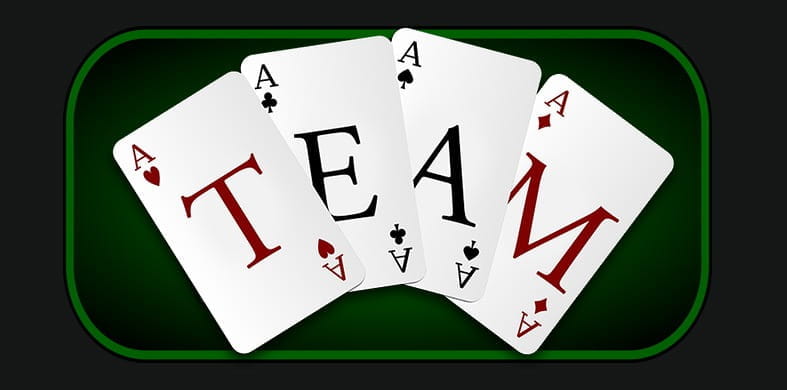Strategic Investment Blackjack
Aug 01, 2019 Blackjack basic strategy is a set of rules and guidelines which allow you to maximize your winning odds. It is very hard, if not impossible, to make a profit playing Blackjack, especially in the long term, if you’re not employing the basic strategy. The basic strategy can be displayed either as a table (multiple tables) or as text. In this regard, the Kelly Criterion is very much like an investment strategy. The blackjack player is forced to regard the game as a series of investments which give overall growth to their playing capital, or bankroll. Below is a very basic explanation of how the Kelly Criterion works in blackjack play.
When we think of gambling, the first thing that comes to mind is that the house always wins. But a group of MIT students proved that the system has its flaws, and it can be beaten. Nowadays, casinos have evolved and adapted their technologies to prevent card counters from taking advantage of the vulnerabilities, but it is still worth trying your luck at some safe and licensed platforms available in the UK.
Keep reading to discover the true story of the infamous MIT Blackjack team that defeated the house.
The Birth of a Legendary Card Counter
Bill Kaplan, a former member of the team, remembers his mom’s reaction when he confessed to her that instead of going to Harvard, he would become rich from gambling. “Oh, God! What Am I going to tell all my friends?” she told him.
Kaplan was a math genius. After reading a book on card counting, he thought he could use the mathematical model to make a fortune from blackjack. It was not exactly what his mother was hoping that her straight-A son would do with his future. However, his step-father was quite impressed with his choice and challenged Bill to play against him every night and prove that he could win.
“I crushed him for two weeks straight and then he told my mother that he couldn’t believe it, but said that I could win at the game so she should just let me go!” recalls Bill Kaplan. His mother couldn’t do anything but comply, and Bill went to Vegas, where he spent an entire year. So, in 1977, Kaplan took off with $1,000 in his pocket and, within nine months, turned it into nearly $35,000. After his sabbatical year in the city of sins, Kaplan graduated from Harvard while still playing blackjack on any given occasion.
But it wasn’t until a leader of a student group from the Massachusetts Institute of Technology (MIT) who played around with card counting overheard Kaplan discussing his blackjack exploits in Vegas when his life took a turn to greatness. The MIT student asked him to train and be in charge of what would later become known as the infamous Blackjack Team.
By the year 1992, Kaplan and his squad were ready to beat the house and become millionaires overnight by exploiting the card counting strategy in the new mega-casinos that were booming at that moment. The team’s friends and partners that had previously seen a 100% win rate on small investments contributed $1 million to fund Strategic Investments. This company would train sharp students in the art of card counting and gambling. Then the new card counters would be sent strategically to unsuspecting casinos.
Mike Aponte – The Blackjack Hacker
Mike Aponte, one of the students trained by Strategic Investments, was a 22-year-old who had no idea what he would like to do with his life. After training hard with other MIT prodigies, he was handed $40,000 cash to gamble in Atlantic City on behalf of the team. After merely 10 minutes at the blackjack table, he had already lost $10,000.
“An executive casino host came to me right away and invited me to a penthouse suite. It was amazing – it had a jacuzzi and pool table. Despite being in awe of the room, I couldn’t enjoy it as much as I would normally have because I was upset about losing all that money.”
Mike’s loss is the perfect example that blackjack is a volatile casino game, even if you use a foul-proof system. However, after continuing to play using the card counting strategy taught by his teammates, Mike Aponte successfully returned home with a net profit of nearly $25,000.
From Student Dorms to VIP Penthouses
Casino moderators are always on the lookout for high rollers – clients that gamble massive amounts – and entice them with perks like free drinks, food, tickets, or rooms, no matter if they win or lose. So the members of the MIT Blackjack Team, who usually spent their week in class, sleeping in dorms and eating at the cafeteria, soon got used to the VIP treatment offered by luxurious casinos.
According to Aponte, being comfortable and dealing with the attention you receive from the casino hosts is more important than the math itself. Since he was Asian, he played the stereotype card that they are reckless gamblers. “My standard story was that I come from a rich family, and I was the spoiled son,” said the student.

As the students got used to living the luxurious casino life, they also became relaxed carrying vast amounts of cash. For instance, after some team members returned to class from a Vegas gambling trip, one of them left a paper lunch bag under his chair. The next morning, Kaplan received a call from that student, who told him that he forgot the paper bag containing over $125,000 in the classroom. The student ran back to the classroom to recover it, but it was gone.
After six months and investigations by the FBI and DEA, the team eventually got their money back from a cleaner that put it in his locker. The pressure soon started growing as more and more members of the MIT Team were banned from casinos. A private investigator was employed to find out who was responsible for the casino exploits. By analyzing the Boston addresses of many of those caught, he soon realized that the team of casino hackers were MIT students.
Most of the MIT Blackjack Team members were scared of getting caught, even though Aponte told them that the staff was harmless. “You would get a tap on the back, and the security would tell you that the management decided you can play any casino game except blackjack.” However, some security guards could become aggressive, mostly if the casino was outside the US.
Aponte remembers that once a new Ph.D. student who just passed the tests thought it would be a great idea to take his wife, who was also a member of the MIT team, to the Bahamas and try their luck at the casinos there. Once he got around $30,000 profit, the casino management found out that he was using a card counting technique, and called in the police.
“They put them in jail and confiscated not only all their winnings but also the team’s money that they had on them. That player and his wife never gambled for the team again.”
How card counting works
In blackjack, high cards represent an advantage for the gambler, while low cards favor the casino. As a card counter, you have to keep a running tally in your mind, adding 1 for lower cards and subtracting 1 for high ones. When the tally increases (more high cards are left in the deck), you should start placing higher bets.
Even though using this strategy won’t win you every bet, statistically speaking, the odds will be in your favor in the long-run. Card counting should always be applied in secret because the casinos don’t like it, and they are free to refuse to let you play, even if it’s not illegal.
In the 1950s, MIT professor of mathematics Edward Thorp researched this technique using computers. By 1962, he had a theory that he published in a book called “Beat the Dealer.” This publication forever changed the perception of the public regarding the game of blackjack.
The End of Strategic Investments
While most members of the MIT Team gave up after being caught, some of them took extreme measures to keep playing. Kaplan remembers a 21-year-old member that kept playing as a spotter – the person that counts cards and then signals their partner to place big bets when the opportunity arises.
“He shaved his head, put a wig on, dressed like a woman, and kept playing. He was a good looking guy!”
After the pressure kept increasing, Kaplan decided to put an end to Strategic Investments, and the company was dissolved in December 1993. At that time, the team already had 80 members, so it was about time to call it quits.
“As a blackjack player, it’s an amazing experience, but as the manager, we had 10,20 or even 30 people playing in different casinos, some in Vegas, some in Canada, and some in Canada. We had to keep track of their revenue, ensuring that none of them was stealing money,” said Kaplan in an interview.
So, he decided that the best way to evolve and keep making money was investing in real estate or other businesses. His wife was the happiest since she was in charge of telling members what to do if they get kicked out of a casino.
After Strategic Investments was dissolved, Mike Aponte formed a new team of card counters, which focused more on the personalities of the students they recruited. According to Mike, their revenues were over the roof. Eventually, he became too well-known as a cheater so that he couldn’t play anymore, but he still makes a lot of money from blackjack. In 2004, he became the World Series of Blackjack, and many people and casinos seek his advice.
The biggest irony of Mike Aponte’s life is that he became best friends with the very people that were hunting him down. “We pulled off something that very few have achieved. Everybody knows that the golden rule is you can’t beat the house in the long run, but that’s exactly what we managed to pull off!”
Strategic Investment Blackjack Definition
Strategic Investment Definition

